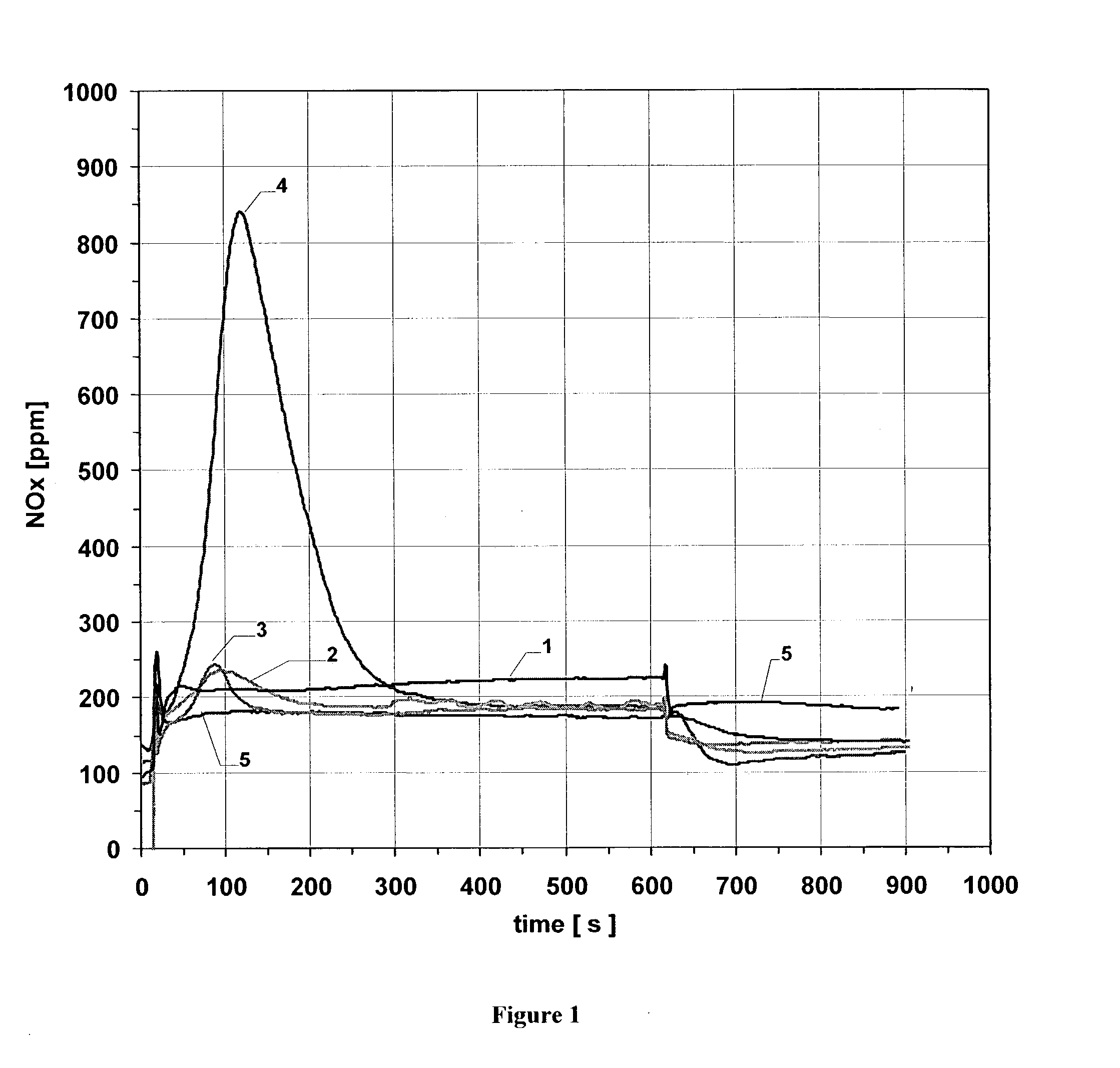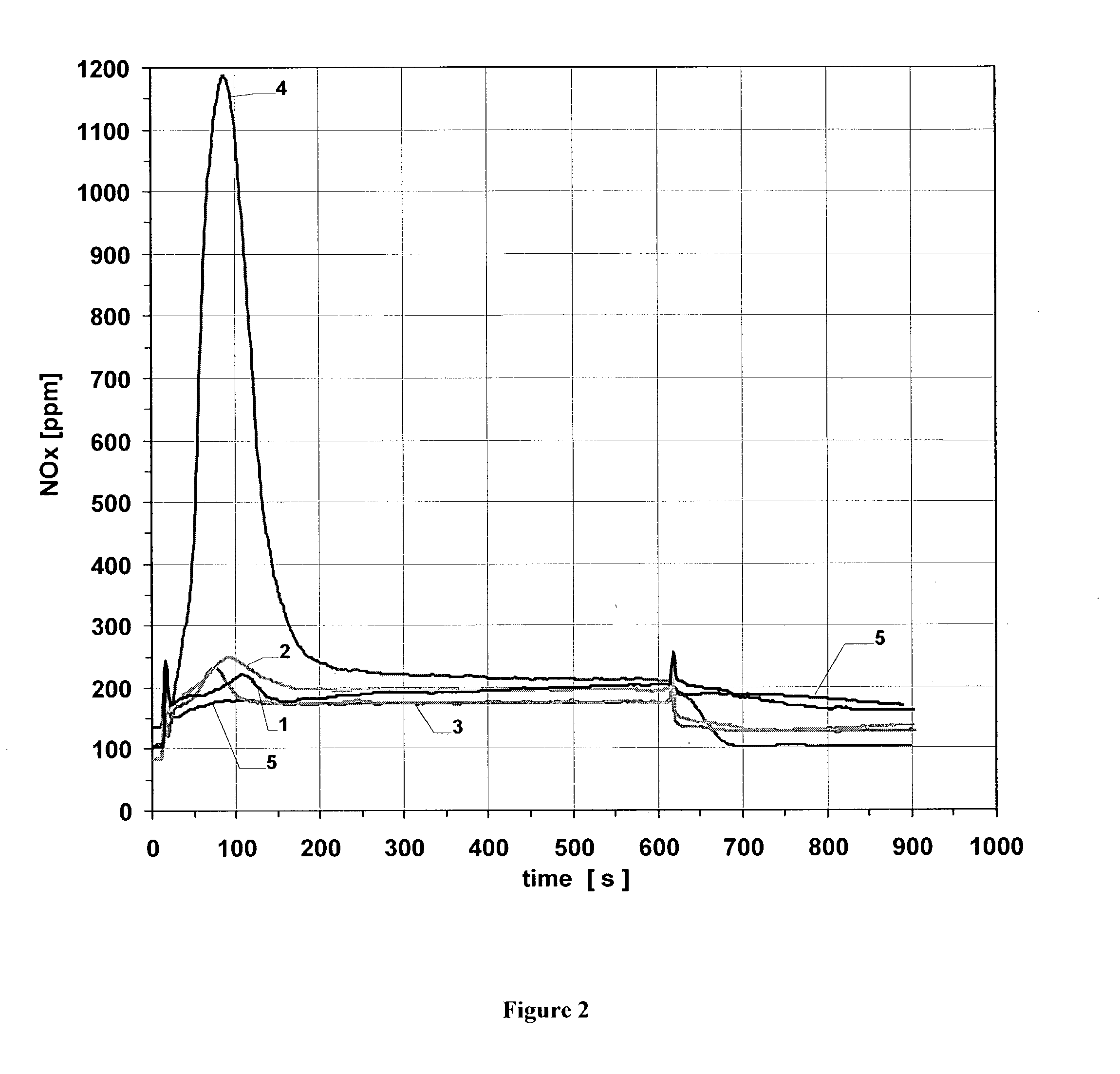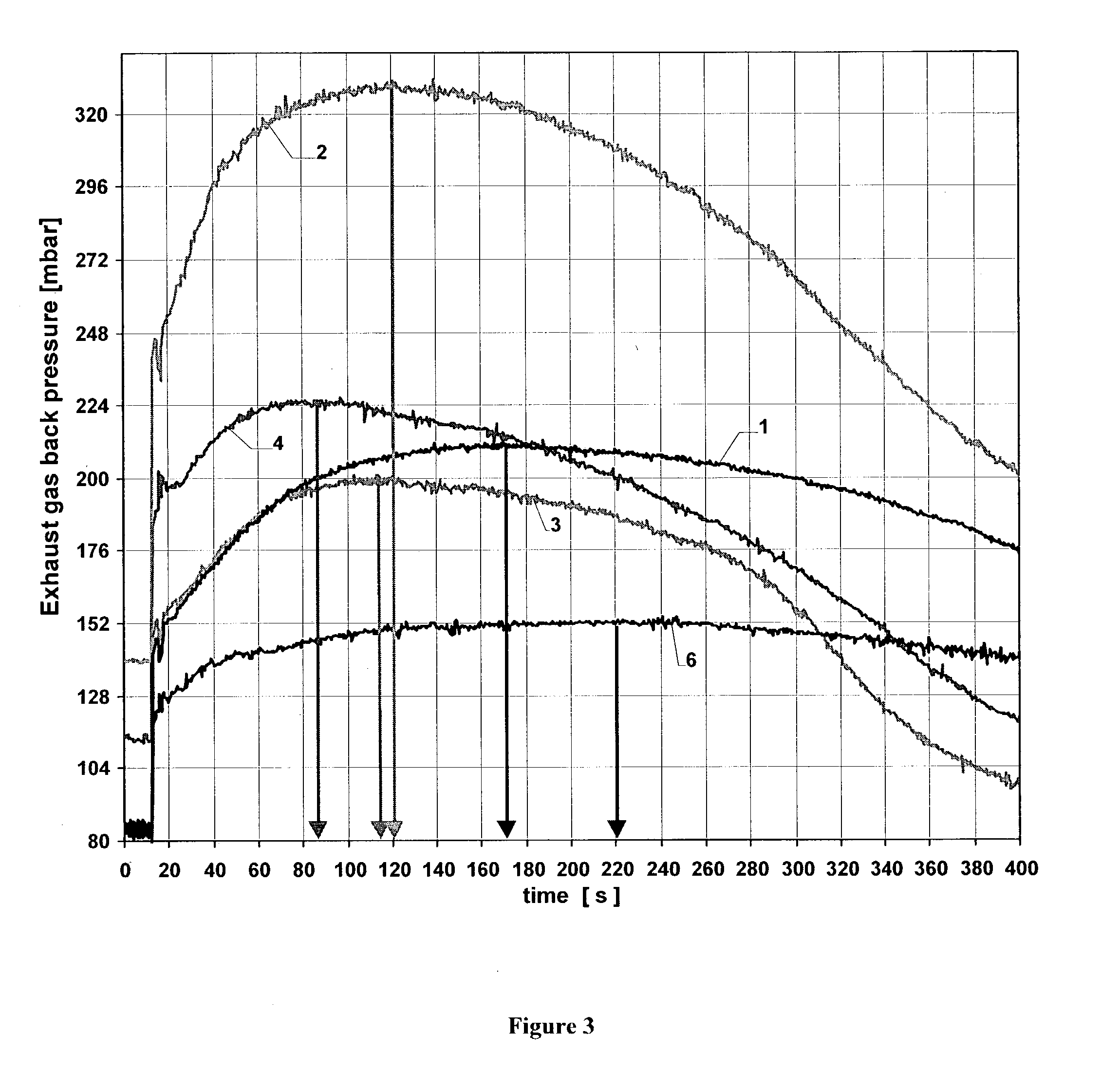Particle filter having a catalytically active coating to accelerate burning off accumulated soot particles during a regeneration phase
a technology of catalytic activity and filter, which is applied in the direction of filtration separation, exhaust treatment, electrical control, etc., can solve the problems of increasing fuel consumption, reducing the ignition temperature of soot particles, and the filter itself is not easily regenerated, so as to reduce the co and hc emissions.
- Summary
- Abstract
- Description
- Claims
- Application Information
AI Technical Summary
Benefits of technology
Problems solved by technology
Method used
Image
Examples
example 1
[0059] The reduction of the soot ignition temperature and the acceleration of the soot combustion by various NO.sub.x storage coatings were investigated in the following examples and comparison examples. The investigations used cylindrical wall flow filters of silicon carbide with a cell density (number of flow channels per cross-sectional area of the filter) of 41 cm.sup.-2, a length of 15.2 cm and a diameter of 14.4 cm (volume ca. 2.5 liters).
[0060] Particle filters were coated with the coating compositions listed in Table 1:
1TABLE 1 Coating compositions Coating components Weight ratio Comparison Pt / CeO.sub.2MnO.sub.2 CeO.sub.2:MnO.sub.2 = 1:1 example 1 Comparison Pt / CeO.sub.2MnO.sub.2 + MgO CeO.sub.2:MnO.sub.2:MgO = example 2 2:2:1 Comparison Pt / CeO.sub.2MnO.sub.2 + BaCO.sub.3 CeO.sub.2:MnO.sub.2:BaCO.sub.3 = example 3 2:2:1 Example Pt / CeO.sub.2MnO.sub.2 + BaCO.sub.3 + CeO.sub.2:MnO.sub.2:BaCO.sub.3:MgO = MgO 2:2:1:1
[0061] Each of the cerium oxides used was stabilized with 30% by...
PUM
| Property | Measurement | Unit |
|---|---|---|
| temperatures | aaaaa | aaaaa |
| atomic numbers | aaaaa | aaaaa |
| temperature | aaaaa | aaaaa |
Abstract
Description
Claims
Application Information
 Login to View More
Login to View More - R&D
- Intellectual Property
- Life Sciences
- Materials
- Tech Scout
- Unparalleled Data Quality
- Higher Quality Content
- 60% Fewer Hallucinations
Browse by: Latest US Patents, China's latest patents, Technical Efficacy Thesaurus, Application Domain, Technology Topic, Popular Technical Reports.
© 2025 PatSnap. All rights reserved.Legal|Privacy policy|Modern Slavery Act Transparency Statement|Sitemap|About US| Contact US: help@patsnap.com



